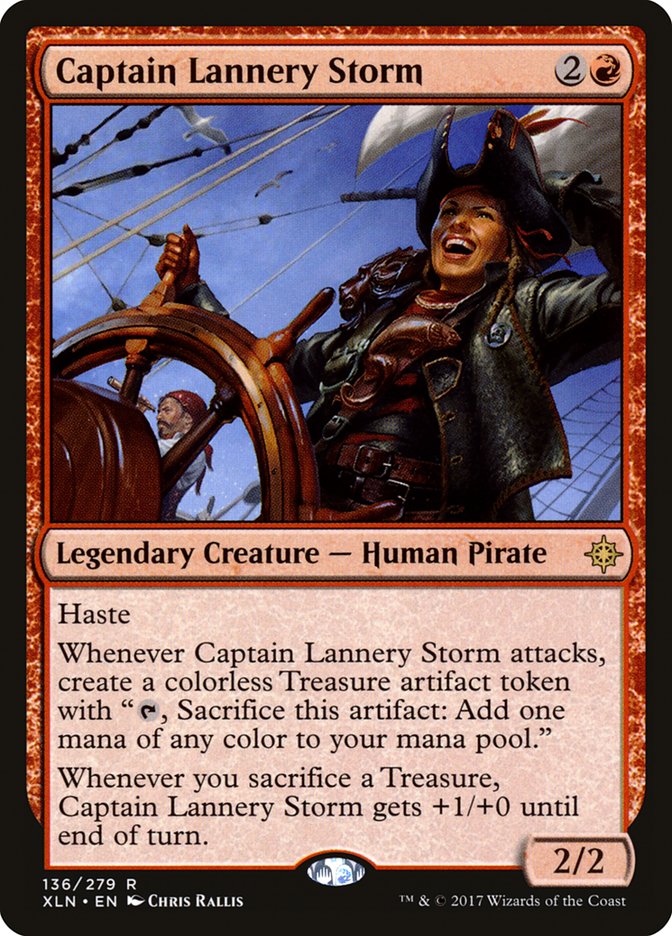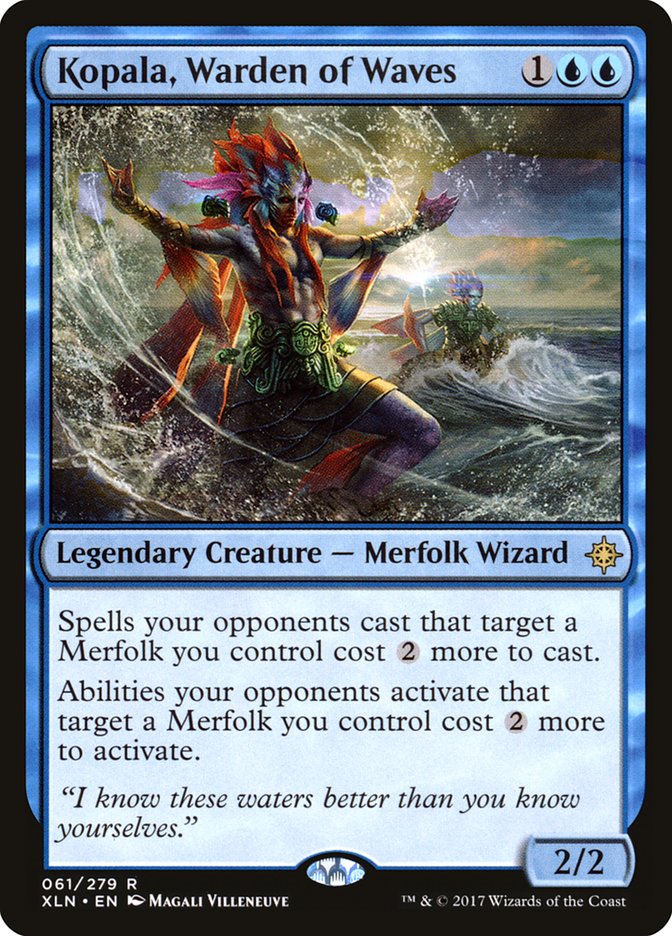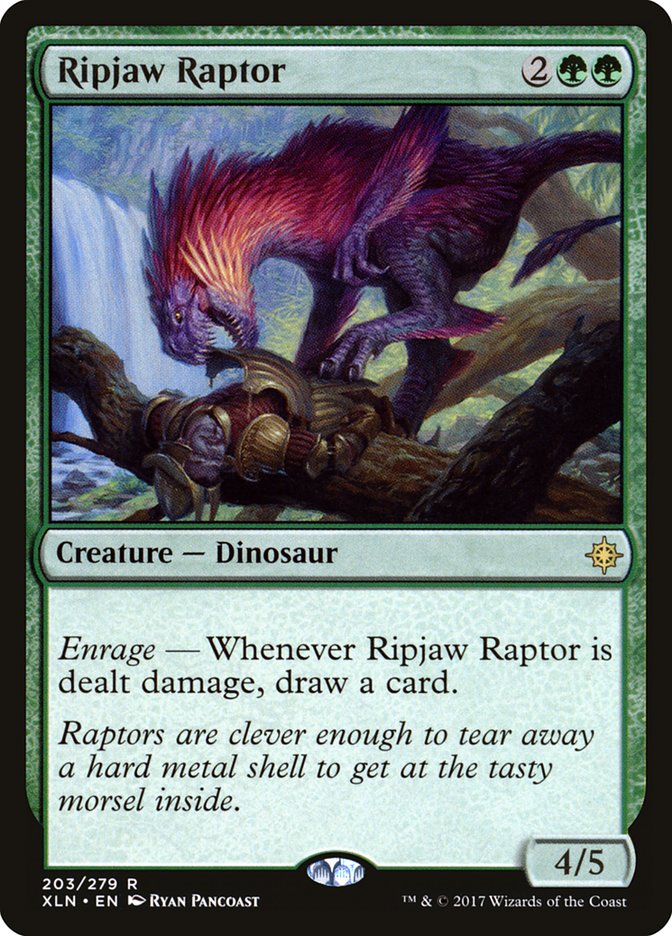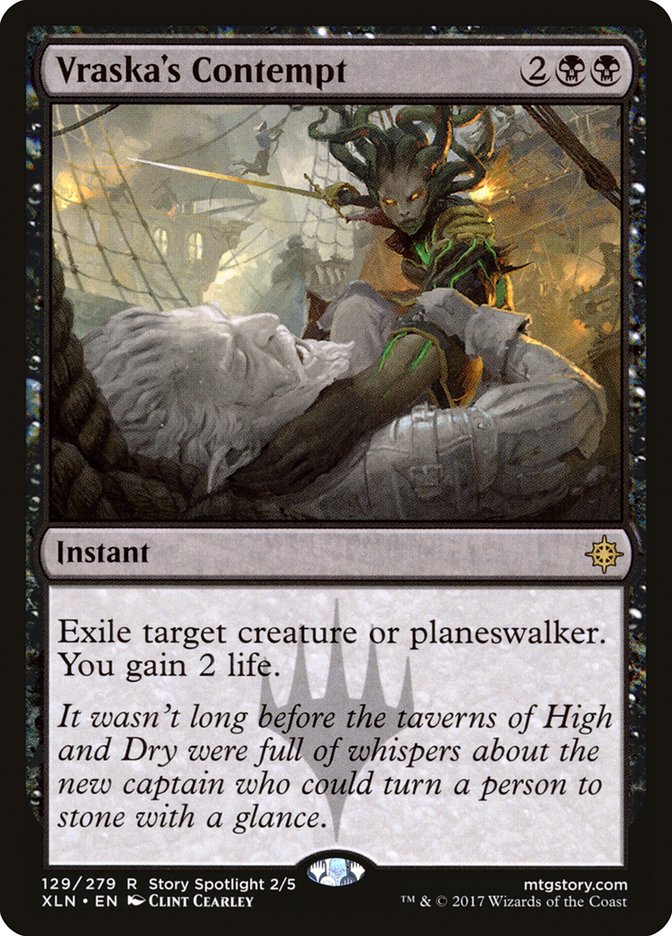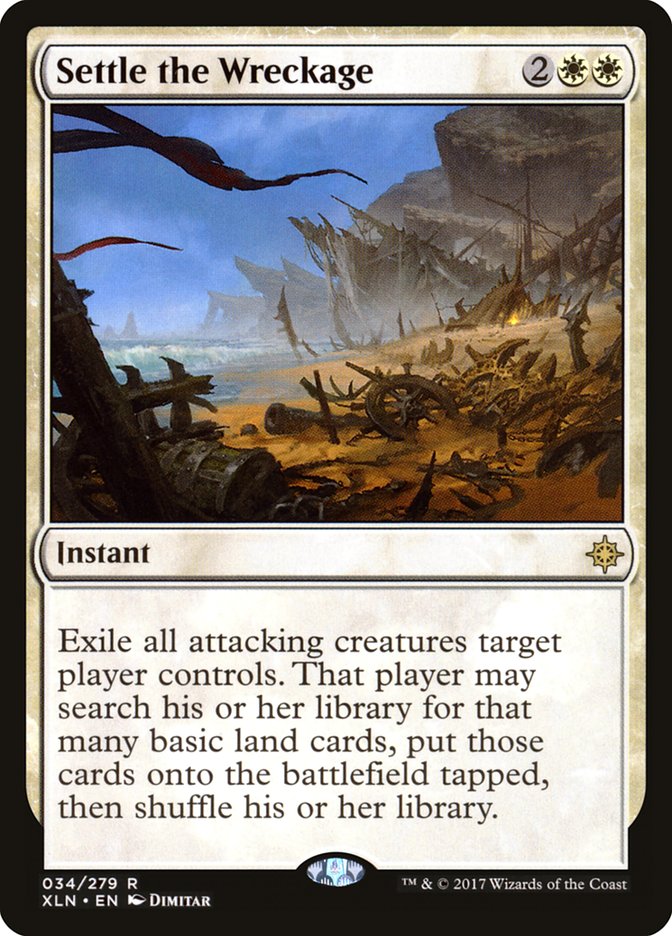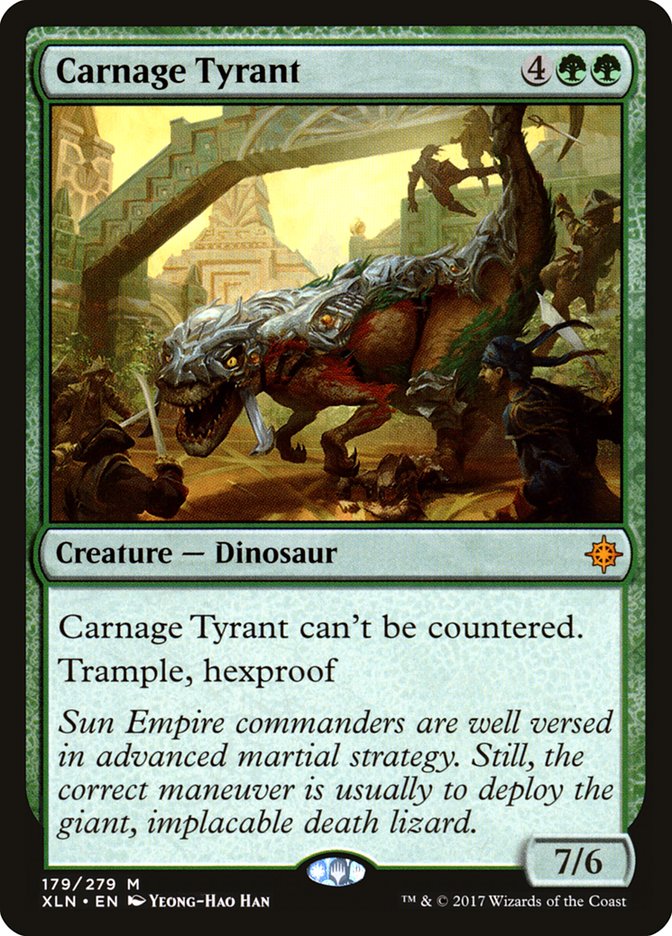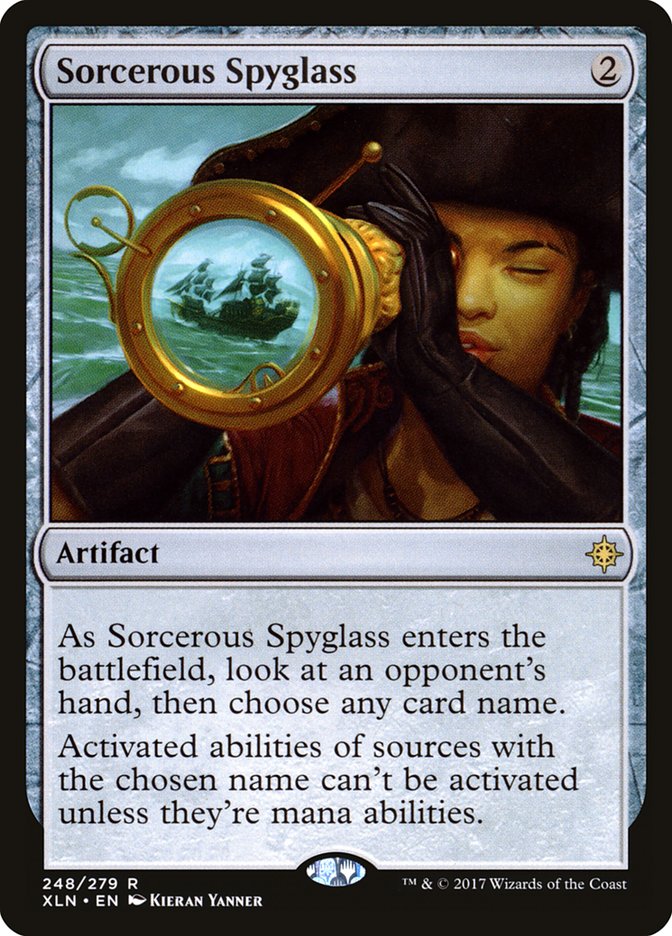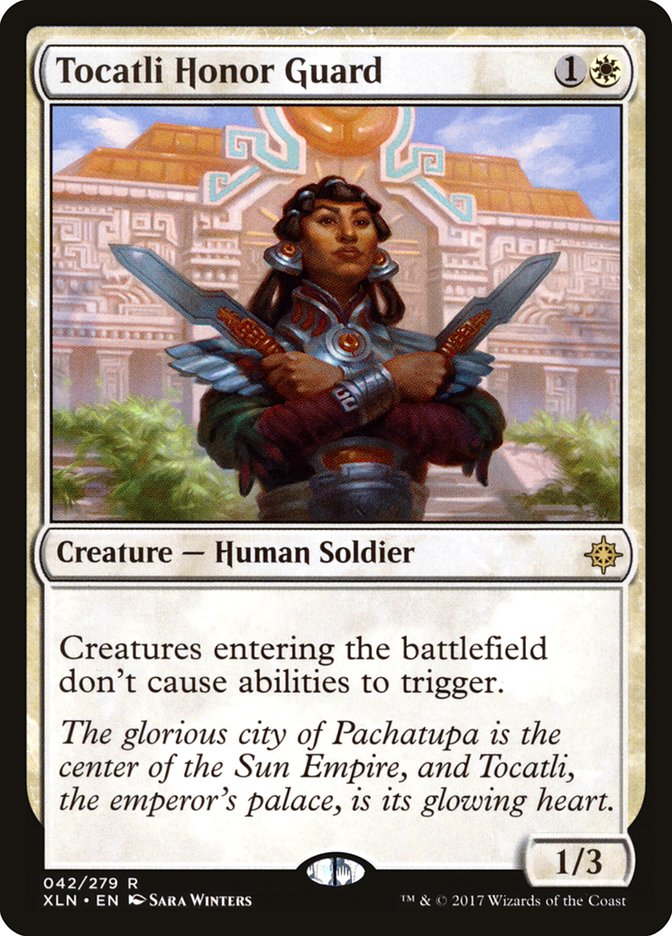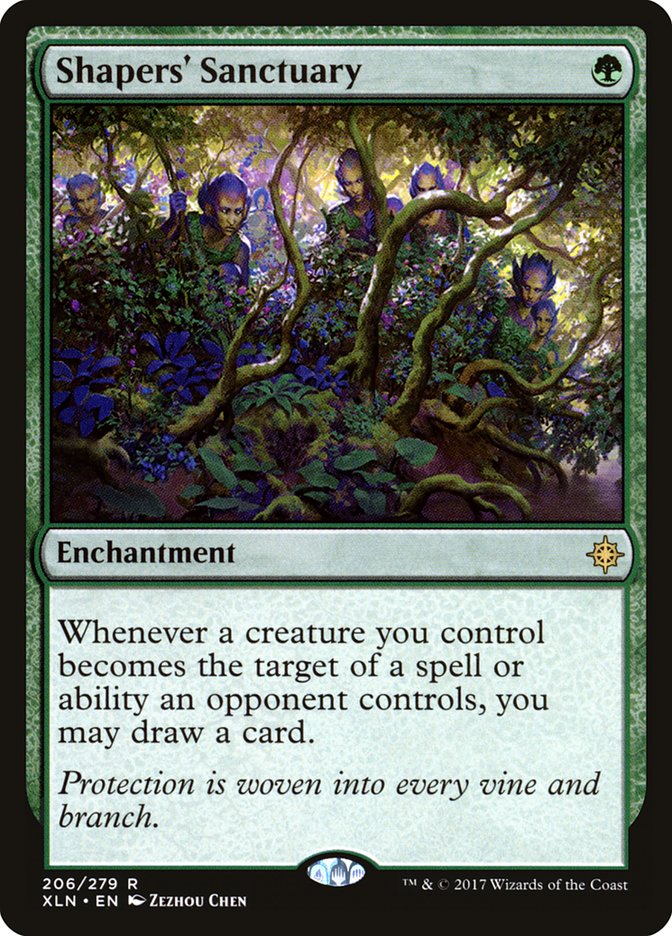Today I want to try something I’ve done very rarely in the past. I’d like to write a rebuttal piece to Ross Merriam’s article “It’s Time For Ixalan!”
Like Ross, I’m looking forward to figuring out Ixalan in the upcoming Standard format. I’m skipping Grand Prix Washington DC, and I’ll be among the first to play a serious Standard tournament with Ixalan, as Worlds is only a single week after the set’s release. Reading over Ross’s take, I thought he did a good job of highlighting some of the more important rares that were previewed as a result of the alleged theft, but I disagree with him on a few points.
Captain Lannery Storm: This is a sweet card, and Treasure is great. I think there’s a good chance it’ll be an important part of what’s going on in this set, a better chance in Limited, but still fairly likely in Standard. We’ve already seen a lot of great expensive payoffs to use single boosts of mana to cast, and Treasures are a great way to cast those or Nicol Bolas, God-Pharaoh a turn early, but I’m skeptical of using Lannery in an aggressive deck without expensive payoffs like this.
Yes, there’s a good chance you’ll get a Treasure right away, as you get to immediately attack with Lannery, since it has haste…or, at least, that sounds right, but is it?
What does the game look like where this actually happens? What did your opponent spend their mana on? If they didn’t cast anything, there’s a really good chance they’ll kill Lannery and you won’t have gotten anything. If they did cast something, the odds are it’s a creature that costs less or a creature that’s bigger, if not both. What this means is that if you attack and trade, you’re hoping to trade your three-drop for their two-drop. You get a rebate from the Treasure, but that’s still not a particularly valuable trade. If their creature is bigger, you’re basically casting a three-mana Lotus Petal if you decide to attack. That’s a lot worse than Manalith, a card you’d never put in an aggressive deck.
If you want Lannery to be able to attack, you need a deck with a lot of instant-speed two-mana removal so that you can kill their blocker, untap, cast Lannery, and get a hit in. The deck Ross suggests has only two Cut and three Fatal Push for cheap removal, and Cut’s a sorcery.
This is not written to criticize Ross. I like the idea of trying to find a way to use Treasure to support artifact synergies. I just don’t think Captain Lannery Storm will be a good enough card in this particular version of this shell.
Ross is right that time will tell on Merfolk in Standard, but I’m also pessimistic about their chances coming out of the gate, as they’ll have no help outside of Ixalan.
While he’s probably right that this is something of a toned-down Kira, Great Glass-Spinner, tribal synergies are extremely important in Merfolk, and I think this is good enough to see play in Modern, just a copy or two, probably alongside one or two Kiras. If you get both on the battlefield, your opponent probably has to give up any hope of using spot removal.
Again, Ross is right on about Hostage Taker. It’s an extremely powerful card, but it’s not a control card, clearly; if this is the first creature you cast, it’ll eat a removal spell and you’ll have nothing to show for it. This needs to be the top-end of a U/B creature deck.
Decks like that are rare, but awesome when they come together. I guess it’s kind of best to think of this card as a Sower of Temptation. It’s of similar power level, and should be used in similar spots. Like Sower of Temptation, you can use it if you expect it to die, as long as you expect to be able to use it again to run them out of removal. In this way, God-Pharaoh’s Gift and The Scarab God, the cards Ross suggested, function like this format’s Reveillark to Hostage Taker’s Sower of Temptation. If you keep trying to steal their creatures, they may eventually run out of removal.
If you’re playing a five-toughness creature, you’re already expecting it to be good against red removal, and historically, a high toughness isn’t enough to make a four-mana creature playable. This is way too weak against black, white, and blue removal to be playable just because you want a threat. Where this gets interesting is if there are other good Dinosaurs with enrage and we can build a deck with these and Sweltering Suns or the like, and try to generate value while killing all opposing creatures. Basically, if I’m putting Ripjaw Raptor in my deck, I want to expect that I’m regularly going to damage it if it stays on the battlefield for a turn.
I think Ross is selling this card short. Yes, four is a lot more mana than three, so it may not be “the second coming of Hero’s Downfall” in that every black deck played four Hero’s Downfalls, and you just don’t get to play that many four-mana spells, so not everyone will play four Vraska’s Contempt. Maybe.
On the other hand, it was often hard to fit four Divinations in a control deck (not unheard-of, but rare), and people regularly play four Glimmer of Genius. If the card’s good enough, people can make room.
So is the card good enough? Well, it has basically everything a removal spell could have going for it: instant speed, exile, any creature or planeswalker, and additional value on top. So just how big of a deal is that additional value? How big is two life? I think it’s surprisingly huge. This may not be on the order of Lightning Helix to Incinerate or Sphinx’s Revelation to Blue Sun’s Zenith, but control decks are much better when they start gaining life when they stabilize, especially in a format where the aggro decks have as much reach as they do now.
I wouldn’t be surprised to see this become the defining removal spell of the format, which would have really interesting implications for threat selection (it would push people away from expensive planeswalkers and toward cheap creatures).
I don’t believe this is a Constructed-playable card. That’s a bit of a stretch; it’s kind of like a cheaper Aetherize if we can imagine that the drawback doesn’t matter much. Aetherize was fringe-playable in small numbers, and this may be too. In general, this is too much mana, requires too much cooperation from your opponent, and has a very real downside. I’d rather just play a regular sweeper.
I suppose that idea raises one exception: if I don’t want to play a sweeper because I’m playing creatures. In that case, I’d need to believe that my opponent is going to attack me with a large number of creatures, meaning that creatures aren’t blocking and trading. I think this means the application would be in the sideboard of a deck with a lot of flying creatures.
Andrew Brown tweeted he specifically designed this mythic to beat control. This means that it was at least targeted for Constructed play, so it’s worth giving a shot. U/R Control as it exists now, for example, would have a horrible time with this card. It’s bigger than Torrential Gearhulk and none of their cards answer it by themselves. It’s too big for Hour of Devastation. Their most realistic hope with Summary Dismissal rotating would be to cast two Sweltering Suns in the same turn or try to set up a double block with Torrential Gearhulks.
Basically, this card demands a sweeper or sacrifice effect, and it’s going to be hard to get the job done with a damage-based sweeper. This is a compelling argument to keep Doomfall around in control decks, especially if they don’t have Fumigate.
The question is, if people make a few concessions to be able to answer this card, is it good enough to play? Where’s the equilibrium point? Do people play a couple of these, forcing control decks to respect them, or do they just not bother? Then do control decks stop having answers? Then people start playing them again. My guess is that the card’s good enough that some people will play it, so control can’t ignore it entirely, but I don’t think we’re looking at a maindeck card or a card that shows up in large numbers, though I could be wrong about that, especially if there’s a Dinosaur deck.
I don’t think Ross’s Public Service Announcement is doing the public good here. Yes, Pithing Needle has been overused, but it is a good Magic card. I’ve had great experiences including a couple in my sideboard in basically any Legacy deck. It wasn’t great before the invention of planeswalkers, but in a world where people predictably play four copies of a planeswalker, it’s a great card…if, and this is a big “if,” you don’t expect your opponents to be able to kill it.
Pithing Needle is good, and that’s not the issue here. The issue is that Abrade is a good card in Standard, and this effect is horrible if it’s just something you plan to spend mana on that your opponent can answer at their leisure.
Pithing Needle is almost always a sideboard card, and the same should be true of Sorcerous Spyglass. You’ll have to be careful not to sideboard it in against opponents who can easily destroy it, but it’s very likely that there will be decks with four copies of a planeswalker and a few other useful cards to name that don’t have artifact removal where you’ll want this effect.
I think Ross is thinking about this card the wrong way. If there’s a home for this, it’s not in a value deck like Oketra’s Monument; it’s almost impossible to construct such a deck in a way where this isn’t stepping all over your other cards. This is a white aggro card for strategies like Hatebears. Having only a single power is a big drawback for a hatebear that’s trying to attack, but this is what we have to work with, and Torpor Orb is a very powerful effect, so it’s easy to believe that the metagame could call for this if an aggressive white deck exists for it.
As a bonus, as for cards Ross didn’t talk about, my favorite may be Shapers’ Sanctuary.
The price is certainly right on this card, and this really hits control decks right where it hurts. If Carnage Tyrant shows up less than you expect, it may be because this card ate all its sideboard slots.
I’m hoping the commons will provide a lot more context and synergies for what’s going on in Standard. The rares feel kind of out of place without the rest of their synergies to support them, but I definitely like the change of pace from a bleak desert world to the vibrant pictures of Ixalan.


